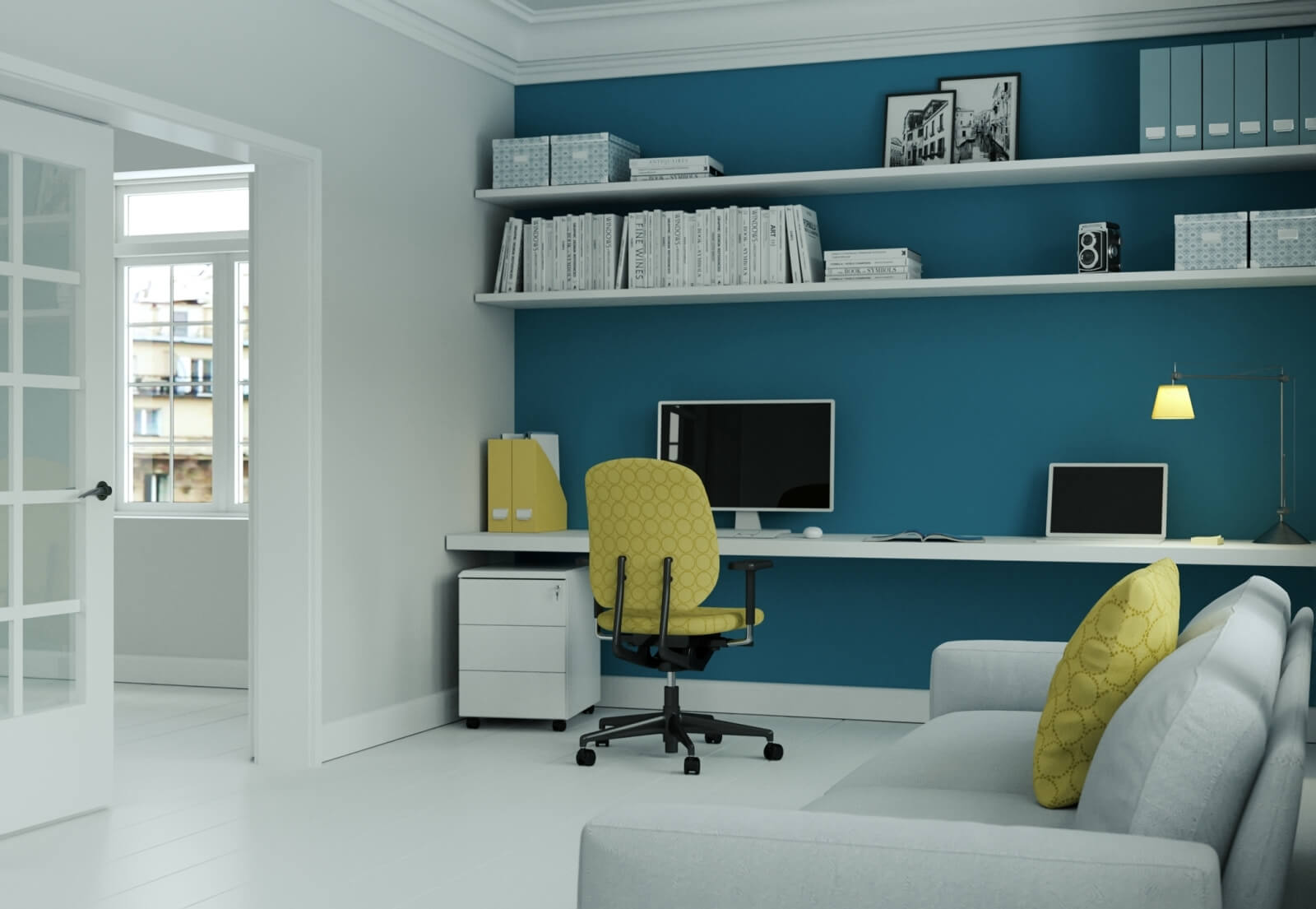With so many organisations embracing a more flexible approach for work that includes working from home, now is the perfect time to set up a workspace that supports you. An ergonomic workspace helps to prevent back and neck pain, as well as physical discomfort in general, helping you be more productive as a result. Working on the couch or in bed simply doesn’t cut it, but that doesn’t mean you have to spend a lot to get your home office sorted out. Here are some practical tips from our team.
#1 – Focus on Your Central Work Tasks
First, focus on the types of tasks you perform during your day. Some people spend most of their time typing, others draw with a stylus, research off physical resources, or use multiple monitors. Whatever you spend the most time doing should be the focus of your setup at home. Add task lighting (like a lamp) and spread out over a larger desk if you work off papers, or mount your monitors at the correct height around you so that you can see everything you need to at a glance.
#2 – Support Your Head and Neck
The general rule is that your head should be vertical to your neck so that your vertebra stack in a straight line. This creates the least amount of tension on your shoulders, tendons, and muscles, so they don’t have to work for hours at a time to hold your head in an offset position. Place a mirror next to where you’re working and check your neck alignment. Chances are, you’re leaning forward because tables tend to be a bit lower than desks. You can fix this by investing in a laptop raiser, or by placing a pile of books under your monitor. Keep checking in the mirror until your neck is perfectly aligned.
#3 – Back Support and Posture
Good posture isn’t really about sitting upright in a stiff, 90-degree position – it’s about supporting your back (and the rest of your spine, right through to your head and neck). The best way to do this is to find a way to sit that allows you to lean back comfortably and easily see your monitors. Think about how you sit in a car seat for a long journey rather than just sitting up.
While a fancy ergonomic chair can help you get this support easily, there are plenty of things you can do with stuff lying around your house. Make sure your seat has padding or place a folded towel up on the seat to support your sitting bones. Roll up a towel or blanket and place it between the seatback and the seat to support your lower back or buy a seat cushion specifically designed for lumbar support. If you’re on the shorter side, having a footrest can help you sit in a supported posture more easily.
#4 – Hand and Wrist Alignment
Ideally, your hands and wrists should be in a neutral, straight position as you work, with no hinging at the wrist, no bending out at the arms, and no crossing the midline of your body. This doesn’t mean you have to invest in anything too dramatic, as you can correct misalignments by changing the height of your desk or chair or moving your keyboard or mouse further away from you.
#5 – Take Breaks
Sitting or working in any position for too long is going to cause strain, slow down blood circulation, and make you feel tired, so take a 5-10 minute break each hour. Walk around the garden, play with the dog, or make yourself a cup of coffee – just getting up and moving around for a while will help reduce aches and pains. It’s great for boosting brain activity too, flushing your brain with plenty of oxygen and a fresh supply of blood to improve focus and creativity.
It’s also good to include gentle stretches once a day to release tension. Yoga, pilates, and other physical activities will also help strengthen your core, improve posture and flexibility, and give your body a way to release after a long day!
At Otto, we never lose sight of the human element. As a people-first IT solutions specialist, we make technology more engaging, more human, and more effective to support you and your business as you strive to new heights.



